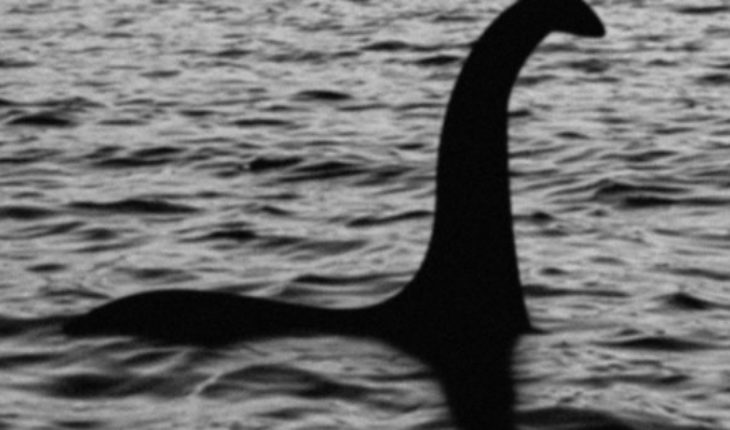A new study concluded that the creatures protagonists of the alleged sightings of the Loch Ness monster can actually be giant eels.
A team of researchers from New Zealand worked to catalog all species that inhabited the famous Lake Scotland by extracting DNA from water samples.
After conducting the analyses, scientists ruled out the existence of large animals with which, according to other theories, the legendary monster could have been mistaken for in the past.
The dark charm of the Loch Ness Monster
The secret documents of the Loch Ness Monster
No evidence was found, for example, that plesiosaurs (a prehistoric giant reptile) or large sturgeon-like fish lived in the lake.
They also rejected theories that Nessie, as the monster is known, was a giant catfish or a Greenland wandering shark.
Researchers found no evidence that plesiosaurs inhabited Loch Ness in the pastDiscarded Theories
The aim of the research was not to find the monster, but to expand knowledge about the plants and animals that live on Loch Ness.
“People love a mystery, we’ve used science to add another chapter to Loch Ness,” said Neil Gemmell, a geneticist at the University of Otago in New Zealand responsible for the study.
“But I’m sorry, I don’t think the plesiosaur theory will be sustained by the data we’ve obtained,” he added.
The expert also confirmed that no shark, catfish or sturgeon DNA had been found. Instead, he referred to “a very significant amount of eel DNA.”
Juvenile eels migrate to areas near Loch Ness as part of their life cycleStudy data do not allow certainty of the size of these animals, but the large amount of DNA found makes experts clear a theory.
“We can’t rule out the possibility that what people see and think is the Loch Ness monster could be a giant eel,” Gemmell concluded.
Juvenile eels, known as eels, reach Scottish rivers and lakes after migrating more than 5,000 km from the Sargasso Sea near the Bahamas, where these animals lay their eggs.
In their analyses, the researchers also identified DNA from humans, dogs, sheep, cows, deer, rabbits and birds, among others.
How will it affect tourism?
But Steve Feltham, who is recognized by the Guinness Book of Records for having held the longest vigil of the Loch Ness monster, does not believe that the creature behind the sightings has yet been identified.
Feltham points out that the study does not rule out other animals such as seals being the creatures with which the monster is confused.
In fact, he believes the finding of eels in the lake is no surprise. “I peeled eels in the lake when I was a kid,” he said.
Each year you receive an average of 10 warnings of sightings of mysterious creatures on Loch NessPero, will the conclusion of this new study affect the interest of the thousands of tourists who come to the lake every year attracted by the mystery of Nessie?
Gary Campbell, who keeps track of alleged monster sightings, receives an average of 10 reports a year that something inexplicable has been seen in the waters of the lake.
Campbell is pleased with the publication of this new study, but says he does not believe that the existing tourism around this legend will be affected.
“The Loch Ness Monster has become a global icon,” he says.
“The study’s findings will provide more information about what’s under the lake, but there are still questions. And visitors will no doubt continue to come to the lake to look for the answers for themselves,” agrees Chris Taylor of Scotland’s national tourism agency VisitScotland.
How was the legend of Nessie born?
The Loch Ness Monster is one of Scotland’s oldest legends. In addition to inspiring books, TV shows and movies, it has created a major tourism industry around it.
The story of the monster dates back to 565, when it is believed that irish missionary Columba de Iona encountered a beast on the River Ness.
Later, in 1933, the newspaper The Inverness Courier echoed the sighting of what was believed to be Nessie. The article described a whale-like creature and lake water “shaken and cascading.”
The editor of the time, Evan Barron, suggested that the creature be described as a “monster”, initiating the modern myth of the Loch Ness monster.
The Loch Ness monster legend was popularized thanks to images like this, known as the “Surgeon’s Photograph” taken in 1934, and which years later proved to be a hoaxIn 1934, British surgeon Robert Wilson claimed that he had taken a photograph of the monster while driving along the shore of the lake.
Known as the “Surgeon’s Photograph,” 60 years later it was confirmed as a hoax plotted revenge after a newspaper ridiculed journalist Marmaduke Wetherell for finding “Nessie’s footprints” on the shore.
The “monster” captured by his camera was apparently a toy submarine with a head made of wooden putty.
Circus elephants swimming in the lake are also another of the theories that tried to explain Nessie sightingsSome explanatory theories about the monster pointed in the past even to circus elephants bathing in the lake.
An investigation by panthetologist Neil Clark found that fairs were common in the Inverness area, especially since the early 1930s.
According to Clark, elephants were allowed to swim in the lake when traveling circuses made stops on their journeys for the animals to rest.
Another theory is that the sightings of the so-called monster are actually due to large fallen branches above the lake and floating on its surface.
translated from Spanish: Loch Ness Monster: The Study That Claims to Have Come Up with an Explanation for the Legendary Mystery
September 7, 2019 |





